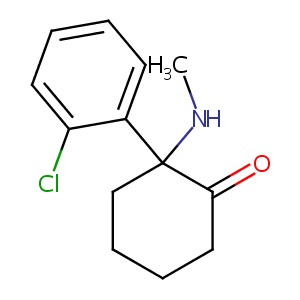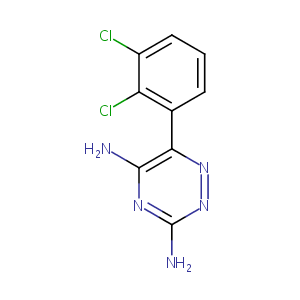| 1 |
ClinicalTrials.gov (NCT02708849) The Sustained Effects of Ketamine
|
| 2 |
FDA Approved Drug Products from FDA Official Website. 2019. Application Number: (ANDA) 076092.
|
| 3 |
Ketamine FDA Label
|
| 4 |
ClinicalTrials.gov (NCT04365985) Study of Immunomodulation Using Naltrexone and Ketamine for COVID-19. U.S. National Institutes of Health.
|
| 5 |
URL: http://www.guidetopharmacology.org Nucleic Acids Res. 2015 Oct 12. pii: gkv1037. The IUPHAR/BPS Guide to PHARMACOLOGY in 2016: towards curated quantitative interactions between 1300 protein targets and 6000 ligands. (Ligand id: 2622).
|
| 6 |
Ketamine-induced bladder fibrosis involves epithelial-to-mesenchymal transition mediated by transforming growth factor-1. Am J Physiol Renal Physiol. 2017 Oct 1;313(4):F961-F972. doi: 10.1152/ajprenal.00686.2016. Epub 2017 Mar 22.
|
| 7 |
Ketamine modulates theta and gamma oscillations. J Cogn Neurosci. 2010 Jul;22(7):1452-64.
|
| 8 |
Contribution of CYP3A4, CYP2B6, and CYP2C9 isoforms to N-demethylation of ketamine in human liver microsomes. Drug Metab Dispos. 2002 Jul;30(7):853-8.
|
| 9 |
Cytoskeleton interruption in human hepatoma HepG2 cells induced by ketamine occurs possibly through suppression of calcium mobilization and mitochondrial function. Drug Metab Dispos. 2009 Jan;37(1):24-31.
|
| 10 |
Ketamine hypertension and the renin-angiotensin system. Clin Exp Hypertens A. 1983;5(6):875-83. doi: 10.3109/10641968309081814.
|
| 11 |
Cellular consequences triggered by ketamine on exposure to human glioblastoma epithelial (LN-229) cells. J Biochem Mol Toxicol. 2023 Dec;37(12):e23484. doi: 10.1002/jbt.23484. Epub 2023 Jul 29.
|
| 12 |
Ketamine cystitis as a mimic of carcinoma in situ. Histopathology. 2009 Dec;55(6):705-8. doi: 10.1111/j.1365-2559.2009.03437.x.
|
| 13 |
Ketamine promotes the amyloidogenic pathway by regulating endosomal pH. Toxicology. 2022 Apr 15;471:153163. doi: 10.1016/j.tox.2022.153163. Epub 2022 Apr 1.
|
| 14 |
Lipoxin A4 methyl ester attenuated ketamine-induced neurotoxicity in SH-SY5Y cells via regulating leptin pathway. Toxicol In Vitro. 2023 Jun;89:105581. doi: 10.1016/j.tiv.2023.105581. Epub 2023 Mar 11.
|
| 15 |
Apoptotic insults to human HepG2 cells induced by S-(+)-ketamine occurs through activation of a Bax-mitochondria-caspase protease pathway. Br J Anaesth. 2009 Jan;102(1):80-9. doi: 10.1093/bja/aen322. Epub 2008 Nov 9.
|
| 16 |
The apolipoprotein E epsilon 4 allele is associated with blunting of ketamine-induced psychosis in schizophrenia. A preliminary report. Neuropsychopharmacology. 1998 Nov;19(5):445-8. doi: 10.1016/S0893-133X(98)00031-1.
|
| 17 |
Expression of the human UGT1 locus in transgenic mice by 4-chloro-6-(2,3-xylidino)-2-pyrimidinylthioacetic acid (WY-14643) and implications on drug metabolism through peroxisome proliferator-activated receptor alpha activation. Drug Metab Dispos. 2007 Mar;35(3):419-27.
|
| 18 |
The effects of lamotrigine on the acquisition and expression of morphine-induced place preference in mice. Pak J Biol Sci. 2009 Jan 1;12(1):33-9.
|
| 19 |
Several major antiepileptic drugs are substrates for human P-glycoprotein. Neuropharmacology. 2008 Dec;55(8):1364-75.
|
| 20 |
Lamotrigine is a substrate for OCT1 in brain endothelial cells. Biochem Pharmacol. 2012 Mar 15;83(6):805-14.
|
| 21 |
Drug-drug interactions for UDP-glucuronosyltransferase substrates: a pharmacokinetic explanation for typically observed low exposure (AUCi/AUC) ratios. Drug Metab Dispos. 2004 Nov;32(11):1201-8.
|
| 22 |
Variation in glucuronidation of lamotrigine in human liver microsomes. Xenobiotica. 2009 May;39(5):355-63.
|
| 23 |
Studies on induction of lamotrigine metabolism in transgenic UGT1 mice. Xenobiotica. 2009 Nov;39(11):826-35.
|
| 24 |
Functional evaluation of polymorphisms in the human ABCB1 gene and the impact on clinical responses of antiepileptic drugs. Pharmacogenet Genomics. 2008 May;18(5):390-402. doi: 10.1097/FPC.0b013e3282f85e36.
|
| 25 |
Effects of anticonvulsants on human p450c17 (17alpha-hydroxylase/17,20 lyase) and 3beta-hydroxysteroid dehydrogenase type 2. Epilepsia. 2005 Mar;46(3):444-8.
|
| 26 |
Inhibition of human aromatase complex (CYP19) by antiepileptic drugs. Toxicol In Vitro. 2008 Feb;22(1):146-53.
|
| 27 |
Antiepileptic drugs are endocrine disruptors for the human fetal testis ex vivo. Toxicol Sci. 2023 Sep 28;195(2):169-183. doi: 10.1093/toxsci/kfad076.
|
| 28 |
Effects of the antiepileptic drugs lamotrigine, topiramate and gabapentin on hERG potassium currents. Epilepsy Res. 2005 Jan;63(1):17-25. doi: 10.1016/j.eplepsyres.2004.10.002. Epub 2004 Dec 8.
|
| 29 |
Electrophysiological and pharmacological properties of the human brain type IIA Na+ channel expressed in a stable mammalian cell line. Pflugers Arch. 2001 Jan;441(4):425-33. doi: 10.1007/s004240000448.
|
| 30 |
Bioactivation of lamotrigine in vivo in rat and in vitro in human liver microsomes, hepatocytes, and epidermal keratinocytes: characterization of thioether conjugates by liquid chromatography/mass spectrometry and high field nuclear magnetic resonance spectroscopy. Chem Res Toxicol. 2010 Jan;23(1):159-70. doi: 10.1021/tx9003243.
|
| 31 |
Genetic association study of treatment response with olanzapine/fluoxetine combination or lamotrigine in bipolar I depression. J Clin Psychiatry. 2010 May;71(5):599-605. doi: 10.4088/JCP.08m04632gre. Epub 2009 Dec 15.
|
| 32 |
Common risk allele in aromatic antiepileptic-drug induced Stevens-Johnson syndrome and toxic epidermal necrolysis in Han Chinese. Pharmacogenomics. 2010 Mar;11(3):349-56. doi: 10.2217/pgs.09.162.
|
| 33 |
ClinicalTrials.gov (NCT00419003) Research Study for Major Depressive Disorder: Investigation of Glutamate Medications
|
|
|
|
|
|
|


